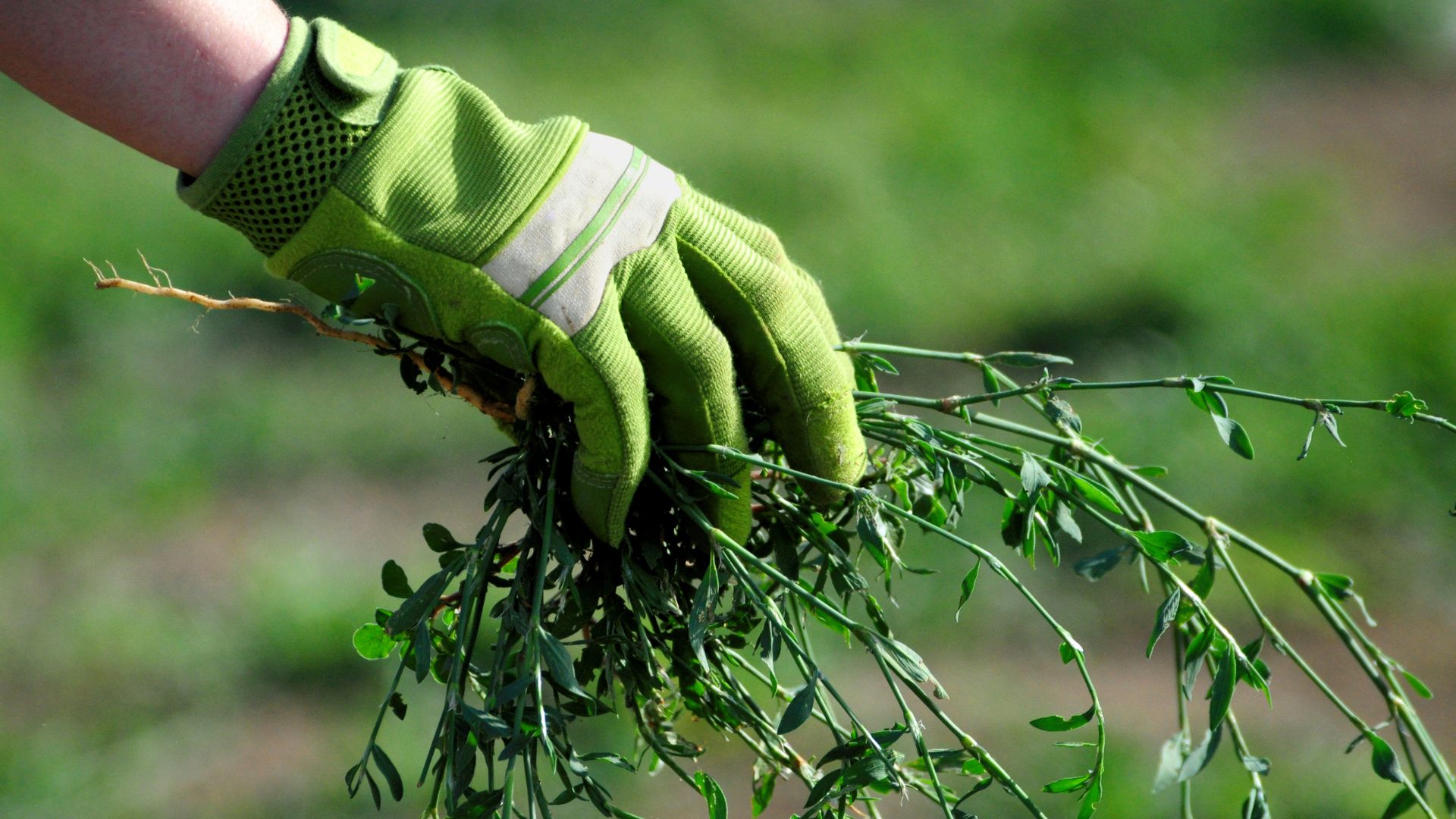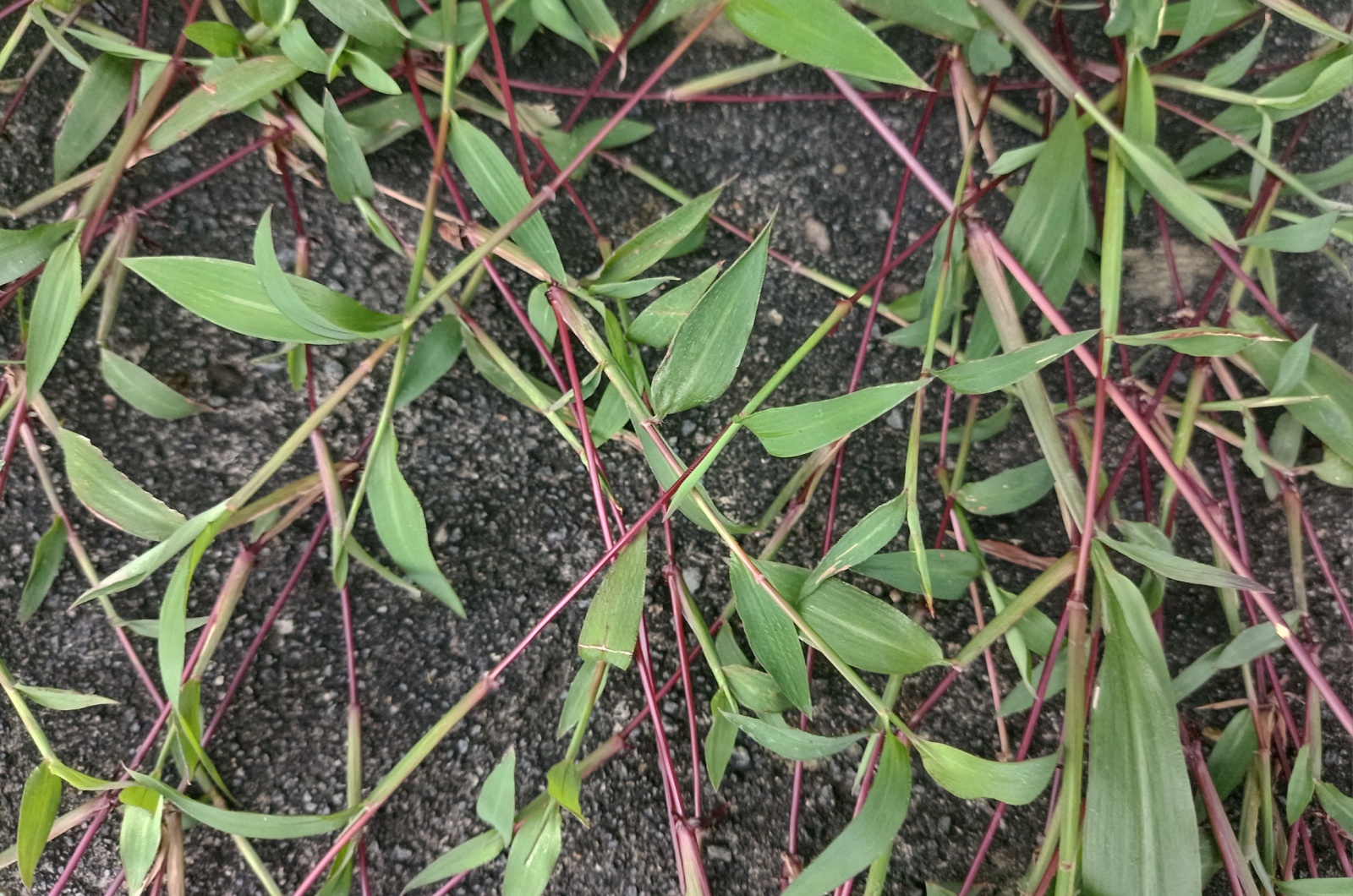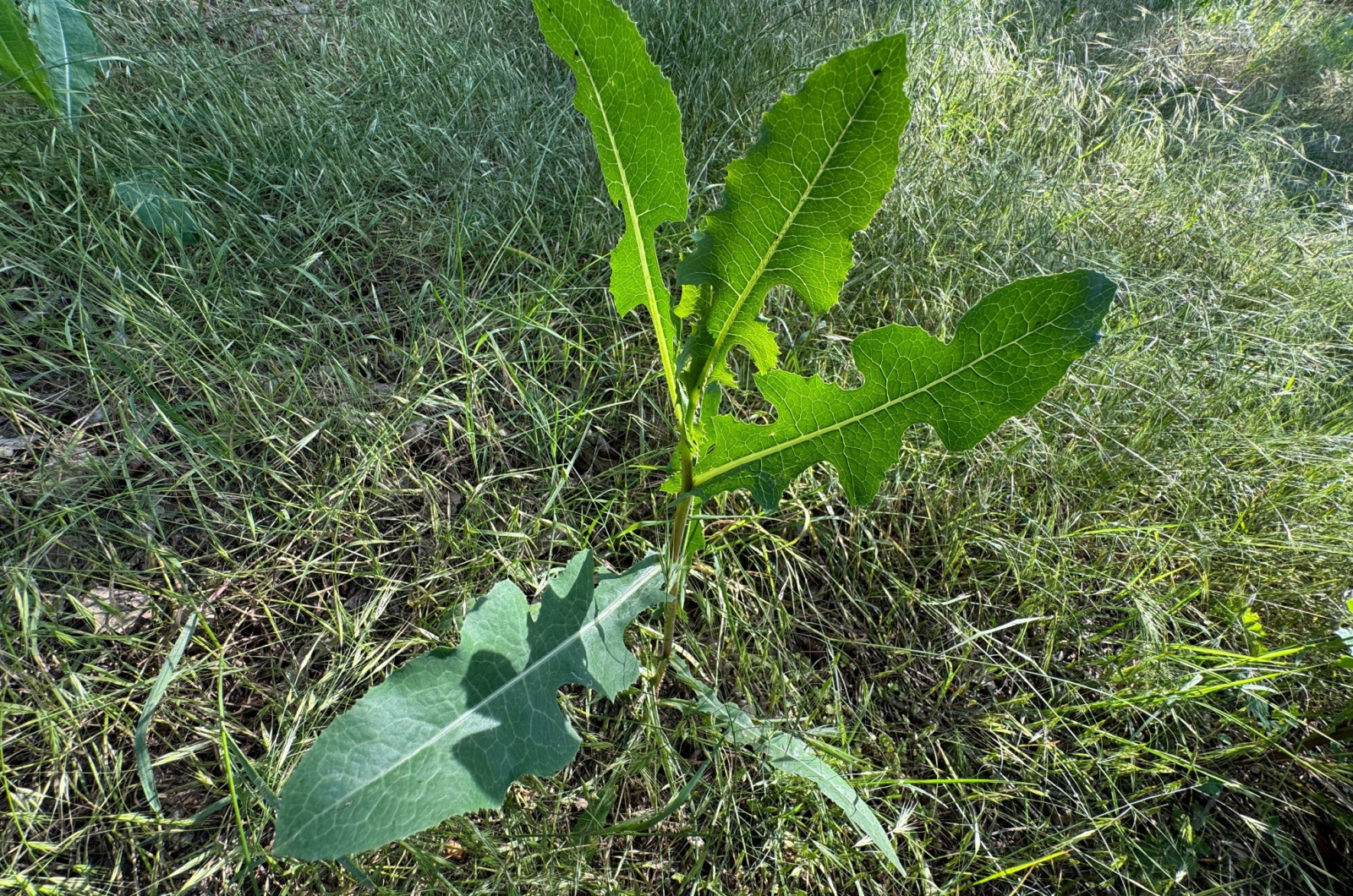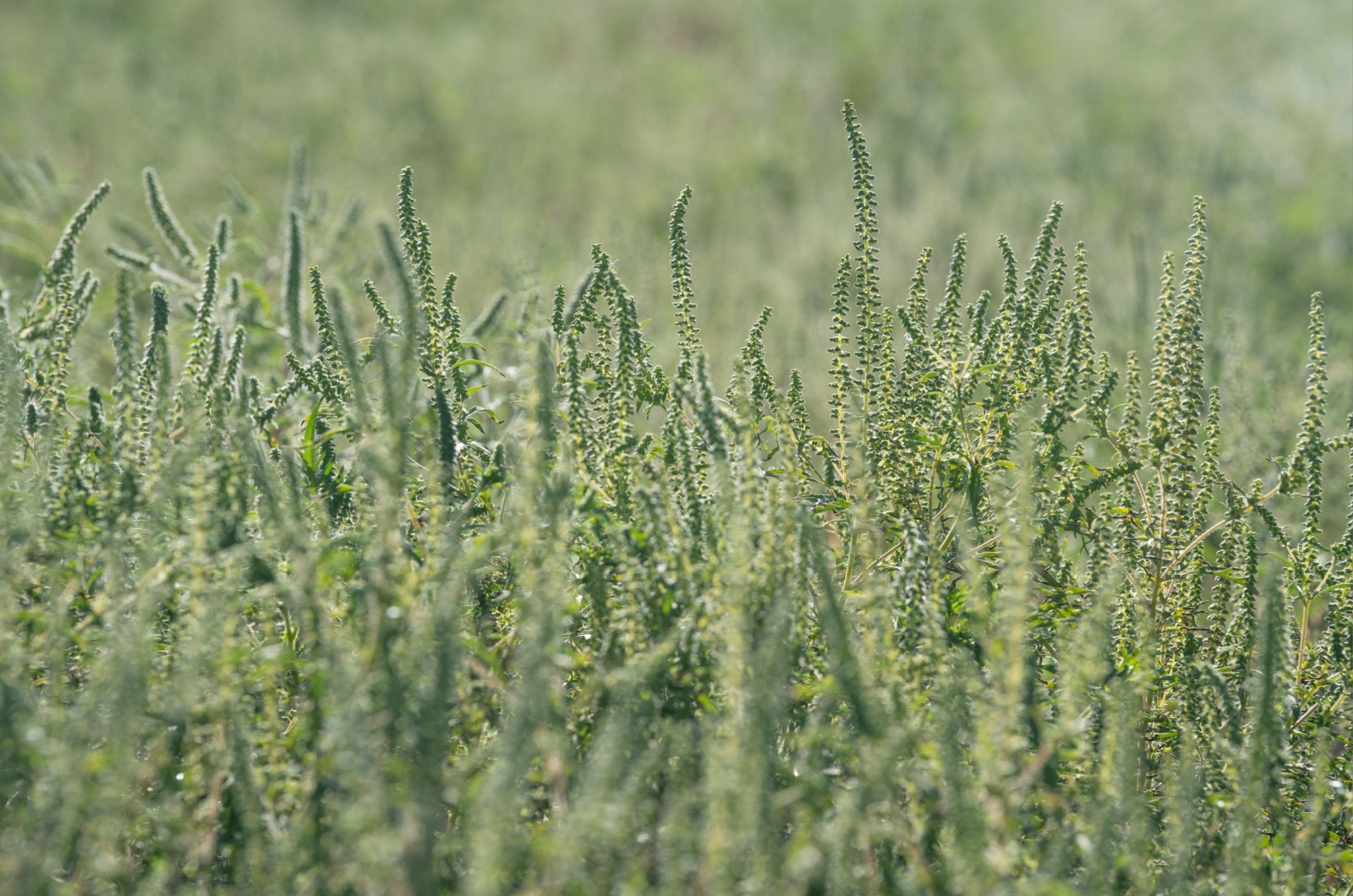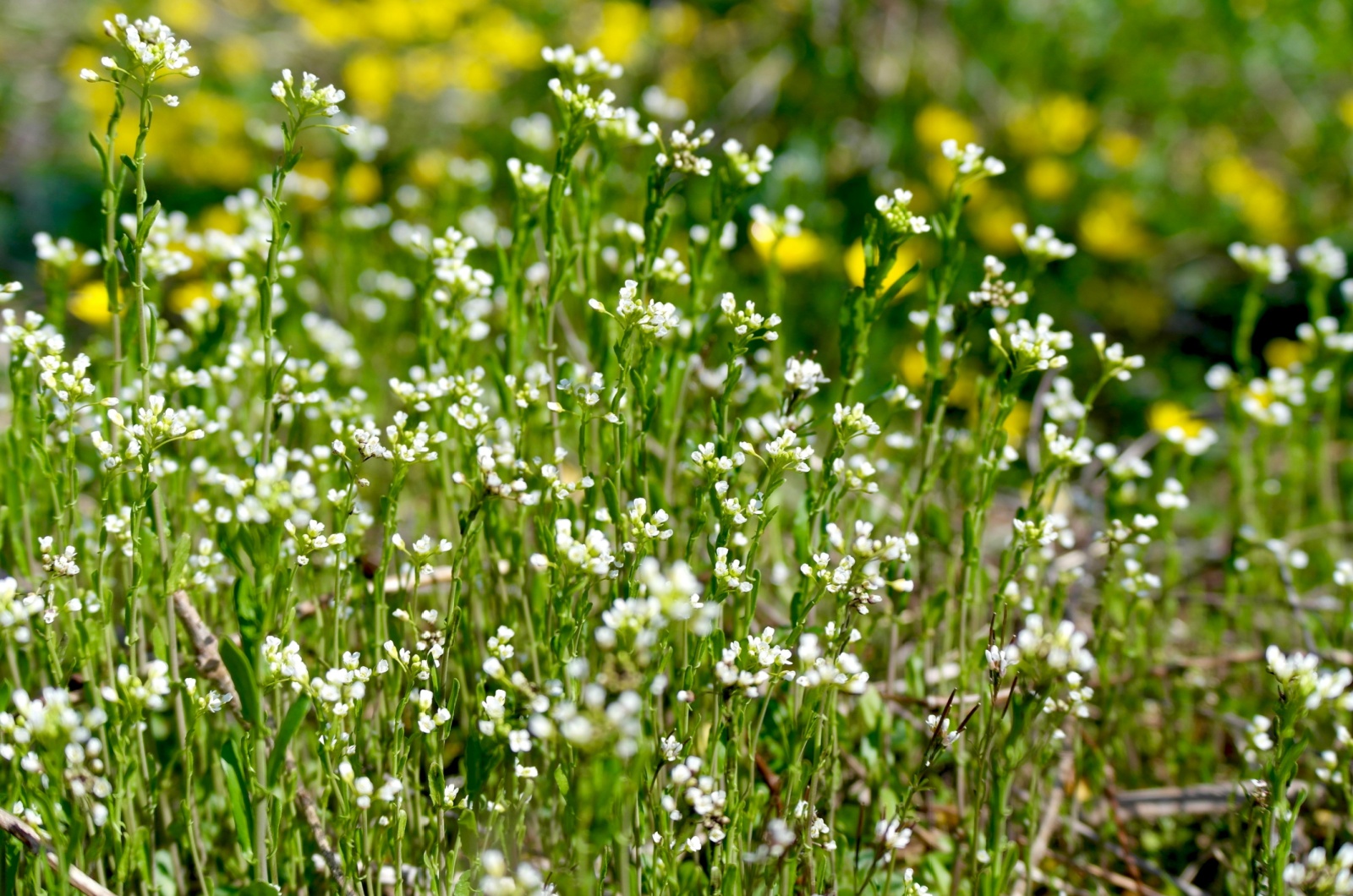Summer’s winding down, and while we’re all dreaming of crisp autumn days, your garden might be in need of a bit of late-season care.
You might have noticed some new weeds have been showing up, often in areas you least expect. If you have not been taking good care of your garden, these weeds (besides being a nuisance) can often be a sign of what your soil needs.
They’ll show you if your garden’s been overwatered, compacted, or just needs a bit more love. Ideally, you’d pull weeds as soon as they appear while their roots are still small and easy to remove.
But if you’ve been waiting for better weather, don’t worry – you can still get rid of summer weeds before they spread seeds.
I’ll gladly share with you the list of weeds you need to pull in late summer. Some are tougher than others, but I’m sure you’ll find a way!
1. Bye Bye Japanese Stiltgrass
I know that Japanese stiltgrass, aka Microstegium vimineum, might look like harmless greenery, but this weed can actually take over your garden in a hot minute!
Often confused with Virginia cutgrass, Japanese stiltgrass’s real talent is crowding out your plants.
You’ll see it in summer with its silvery-green look and yellow flower spikes. But don’t jump the gun and start pulling it up right away. If you do, you might end up with more weeds.
Instead, wait until later in the season to deal with it. You can pull it out using a hori-hori knife or a scuffle hoe. Or, if you prefer, mow or trim it down with an electric trimmer before it has a chance to spread seeds.
Afterward, spread some mulch to keep any new seeds from growing.
Related: 6 Weed Control Tips You Need To Banish Weeds From Your Garden For Good
2. Make Common Chickweed Not So Common
Chickweed (Stellaria media) sounds like a fun little plant, right? Chickens are fans (hence the name) and bees, birds, and butterflies can’t get enough of its pretty flowers.
I’ve also heard that chefs like to toss its leaves into salads for some refreshment.
Even besides all these advantages, we shouldn’t be fooled because this lovely plant is actually considered invasive in places like Virginia and Pennsylvania (not so lovely after all).
Chickweed is usually a weed that grows in winter, but in some spots, it starts growing sooner (especially if your soil is rich in nitrogen).
To keep this plant from messing up your garden, it’s best to pull out those tiny green seedlings as soon as you spot them in late summer or fall.
If you let them hang around, they’ll flower and set seeds, turning your garden into a chickweed paradise!
3. Prostrate Knotweed Looks Like Regular Grass
A couple of years ago, I tossed de-iced snow onto my lawn. Soon, I was surprised to see some greenery beneath, but little did I know it was not the kind of grass I was hoping for.
What lies beneath the snow was Prostrate knotweed, aka Polygonium aviculare. Bummer, I know!
I figured out that the best time to tackle prostrate knotweed is early summer. If you missed this window, you can still manage it late in the season – keep an eye out on their seeds and make sure to get them before they spread.
Improving soil compaction and boosting nutrient levels also helped me a lot when dealing with this weed (fix these to prevent knotweed from striking again).
4. Prickly Lettuce Is So Annoying
If your garden is pretty damp, then you’re probably going to deal with Prickly lettuce. You might spot those prickly rosettes popping up from mid-summer to fall.
While it’s usually an annual, it can occasionally act like a biennial. They can spread seeds on their white fluffy tufts and quickly take over.
To keep prickly lettuce from becoming a bigger problem, pull it out before its seeds mature. And make sure your garden beds are densely planted (this will help prevent seeds from finding room to grow).
Just remember, those seeds can stay viable for up to three years, so choose wisely when throwing them away (don’t even think about putting them into your compost pile!).
Related: Say Goodbye To Prickly Lettuce Weeds With This Simple Yet Effective Hack
5. Don’t Forget About Nimblewill
Nimblewill is popular as a warm-season grass in the southern states, but it can be a bit of a troublemaker in cool-season lawns.
These weeds find lawns stressed from heat and drought in the summer super attractive. Its silverish-green blades can look pretty out of place compared to the fine-textured grass you’d rather see.
The good news? Nimblewill doesn’t root deeply, so you can usually pull it out by hand. Just make sure to get every last bit, or it’ll be back (and it won’t come in peace).
6. Curly Dock Can Sneak Up On You
Curly dock is super sneaky! Why?
Well, it’s because it spreads by hitching rides on wind, water, and even animal fur (I wonder how many weeds my dog Luna brought to my yard).
Unfortunately, this perennial can be tough to remove once it’s settled in. Its bright yellow flowers in summer turn into brown seeds that can stay viable for up to 50 years (yes, you read that right!).
The real challenge is its deep taproot, which makes removal a bit of a workout. To get rid of the curly dock, use a spade or dandelion weeder to dig around 6 inches from where the plant stands.
This way, you can avoid breaking up the root and ending up with more weeds to deal with later.
7. Ragweed For The Sniffles
I feel sorry for all those gardeners with allergies – you’re all true heroes, especially if you have to deal with ragweed.
Most gardeners encounter it at some point in their gardening journey, but if you keep your garden top-notch, there won’t be tears and sniffles for you!
These annoying weeds are attracted to dry, poor soils. They can grow quickly and outcompete a garden’s native plants until frost arrives.
But if the weed is already taking over, you can either hoe it out or mow it down. A thick 3-inch layer of mulch might help smother them, and in extreme cases, you can use a 2,4-D herbicide.
Remember to always try the simpler methods first!
Related: Everyone Should Be Weeding Their Gardens In The Morning, And Here’s Why
8. Hedge Bindweed Might Will Smother Your Plants
Don’t be fooled by the innocence of hedge bindweed – this invasive vine loves to wrap itself around anything in its path, squeezing the life out of your plants and even releasing chemicals that block their growth (awful, I know!).
What’s even worse is that its roots can burrow nearly 9 feet deep into the soil, making it almost impossible to get rid of.
In this case, you have nothing else to do but to grab a garden fork and dig out those deep roots. Keep at it every two weeks until you’ve exhausted its reserves (it can be tiring, but don’t give up!).
9. Purple Loosestrife Is Not Just A Pretty Wildflower
You might think that purple loosestrife is a lovely wildflower that’d be a great addition to your garden – in this case, think twice.
Purple loosestrife is a weed that spreads far and wide by hitching rides on boots, equipment, and even wildlife.
Commercially available in some states, it often crosses paths with wild loosestrife – and what was once a beautiful flower becomes an invasive nightmare.
To keep this monstrosity out of your garden, dig up the entire plant along with its roots. It’s a bit of a job, but it’s the best way to prevent it from spreading all over your landscape.
Related: 3 Methods For Getting Rid Of Weeds From A Lawn
10. Hairy Bittercress Go For Those Bare Patches On The Lawn
Bare spots in your garden or patches on your lawn are superb locations for hairy bittercress (these weeds can be picky, too!).
They love to make an appearance late in the summer and can even creep into your garden via nursery-bought plants (new fear unlocked).
With their tiny, kidney-shaped leaves, they might be mistaken for a dandelion; and if they’re allowed to set seeds, they’ll quickly make their own carpet.
If some do come to your yard, I would recommend yanking out the shallow-rooted seedlings as soon as you spot them, especially in wet or watered areas.
A good layer of mulch will help to prevent new growth and keep your garden looking neat and weed-free.
11. Dandelions Even Have Some Benefits
Ahhh, cheerful dandelions – you either love them or want to get rid of them ASAP.
Some folks appreciate their bright yellow blooms and their knack for loosening compacted soil, while others see them as troublesome invaders.
We can all agree on one thing: they are aggressive growers that can quickly overshadow your turfgrass and other plants if left unchecked.
Dandelions are pretty tenacious and will keep flowering until fall; and you know what that means – spreading their seeds left and right, covering up your entire garden.
To keep them in check, pull them out from moist soil either by hand or with a tool, making sure you remove every last bit of their sturdy taproot. If you miss any roots, they’ll be back before you know it!
Related: 25 Ingenious Ways You Can Use Dandelions Instead Of Throwing Them Away
12. Shepherd’s purse
Shepherd’s purse can suddenly start showing up in tree beds, deer-frequented yards, and newly planted lawns.
This cool-season weed is notorious for its year-round presence and rapid flowering, tossing out those seeds like confetti (and trust me, you won’t be cheering).
They start spreading their seeds early and don’t take a break, which can make you feel like you’re always on some sort of a weed watch.
Luckily, Shepherd’s purse roots are mostly shallow, making them relatively easy to pull out (unless your soil is as compacted as a brick).
For a more thorough approach, slice through their taproots with a hoe and compost the dead plants (just make sure they haven’t gone to seed).
13. Cinquefoil Can Pretend To Be A New Strawberry Plant
Cinquefoil might look like your garden’s new strawberry plant, but that’s just its way to sneak in.
With over 300 species, this invader loves to take over garden beds (especially if your soil’s a bit on the poor side).
Unlike strawberries, which have three leaflets, cinquefoil actually has five, making it easy to spot once you know what to look for.
This summer weed comes in two flavors:
• Common cinquefoil – spreads aggressively with runners
• Sulfur cinquefoil – a self-seeding menace
While its yellow flowers are a hit with pollinators, it’s best to bid this plant farewell before it grows all over the place.
To remove it, grab the stem at soil level and pull (you can use a weeding tool if you need extra leverage to get the root out).
Related: 30 Weeds With Small Yellow Flowers And Tips To Eradicate Them
14. Japanese Knotweed Can Be A Tough Cookie
Japanese knotweed is the type of guest in your garden who overstays their welcome (and then some).
In over half of U.S. states, it’s known for taking over gardens and homes, growing up to 10 feet tall, and weaving its way through foundations and walls (this weed is super strong!).
If you spot a few stems (under 20), you might still have a fighting chance by cutting them back weekly and sending the clippings to the landfill.
But if your knotweed has already grown over 3 feet, you’ll need to be extra vigilant – mow it down throughout the fall and be prepared for a long battle, as getting rid of this persistent plant can take up to three years if you’re avoiding chemicals.
For major infestations, I would suggest bringing in the pros.
Dealing with weeds is part of every gardener’s routine, but preventing them is far easier than handling them later.
So, keep a sharp eye out for these pesky intruders, especially in late summer, when they love to sneak into our gardens and spread all over. Don’t let them fool you by their silly disguise (strawberries and pretty flowers might not be what you think they are).
Related: 5 Ways To Keep Weeds Out Of Flower Beds And Reduce Garden Chores

